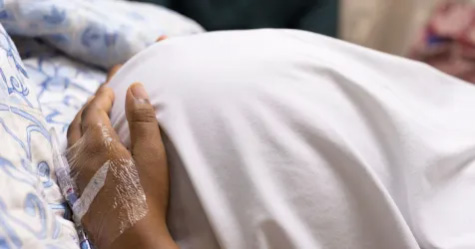Living in a New Jersey municipality with less affordable rental housing was associated with higher odds of severe maternal morbidity, according to a cross-sectional study published in JAMA Network Open.
“Maternal mortality and morbidity are pressing issues in the United States and the rates have been rising over the past several decades, and yet we know little about their upstream causes or about policies that could improve maternal health,” Felix M. Muchomba, PhD, an assistant professor in the Rutgers University School of Social Work in New Brunswick, New Jersey, told Healio. “We wanted to provide insight on policy levers that can potentially be used to improve maternal health and reduce socioeconomic disparities.
“In addition, with rapid growth in housing costs that we recently experienced in the U.S., we were concerned that it could portend worsening maternal outcomes, especially for those already stretched financially — pregnancy or childbirth could mean stepping out of the workforce at a time when you most need the income to provide for a growing family,” he said.
Muchomba and colleagues matched New Jersey birth records from 2008 to 2018 with maternal hospital discharge records up to 42 days postpartum. The researchers used mothers’ residential addresses to identify municipal-level housing data, which included median rent, poverty rates and population size. They also determined the rental cost burden — defined as the percentage of municipal renters spending more than 30% of their income on rent — as well as the availability of publicly supported affordable housing.
In total, 1,004,000 New Jersey mothers who delivered in 562 municipalities were included, 20,022 (2%) of whom experienced severe maternal morbidity (SMM).
The odds of SMM were greater for mothers living in a municipality with a greater rental cost burden (OR = 1.45; 95% CI, 1.17-1.8). Controlling for individual and municipal characteristics, each percentage point increase in rental cost burden increased the odds of SMM by 0.27% (OR = 1.27; 95% CI, 1.01-1.6).
Analyses by educational level revealed that having less than a high school degree was associated with the greatest odds of SMM (OR = 1.81; 95% CI, 1.06-3.1). The risk for SMM among mothers with less than a high school degree decreased by 8% (RR = 0.92; 95% CI, 0.85-1) for each additional $1,000 each person with a sub-poverty income received in annual municipal-level housing subsidy.
“The results also suggest that greater availability of publicly supported affordable housing, which in the study included housing developments that were federally funded, state funded or inclusionary zoning developments, has the potential to mitigate the association between rental housing costs and severe maternal morbidity and reduce socioeconomic disparities in severe maternal morbidity,” Muchomba said.
The findings highlight the importance of providing support to patients with high housing cost burdens, “not just those who are homeless of inadequately housed,” Muchomba said.
Moving forward, studies should evaluate how much redlining and other housing policies play a role in racial disparities in SMM.
Source: healio.com













